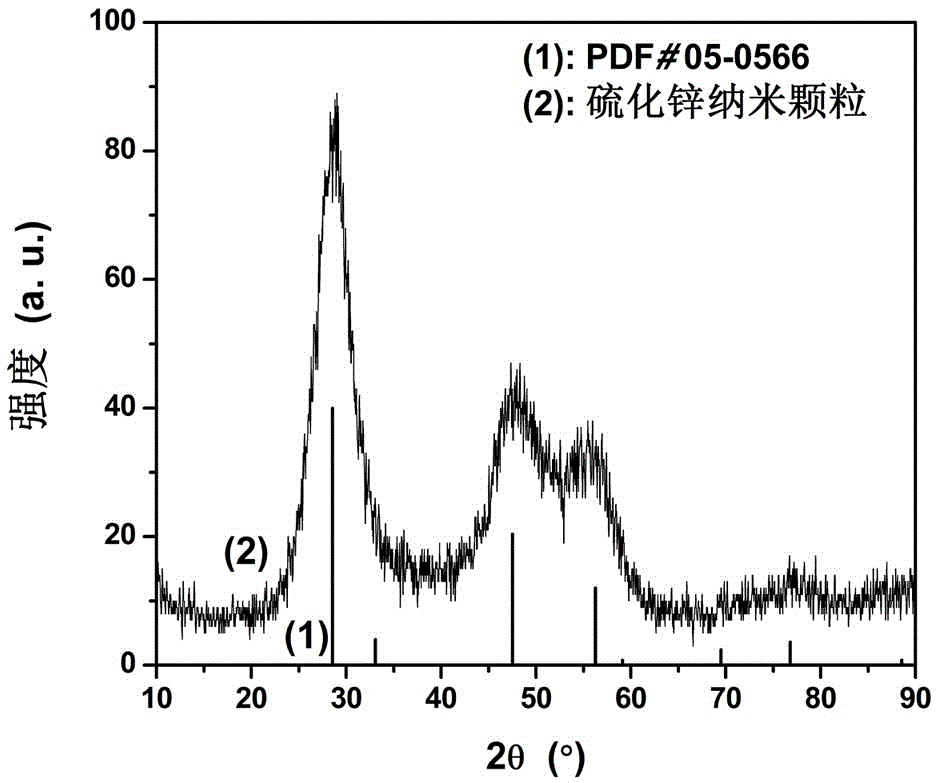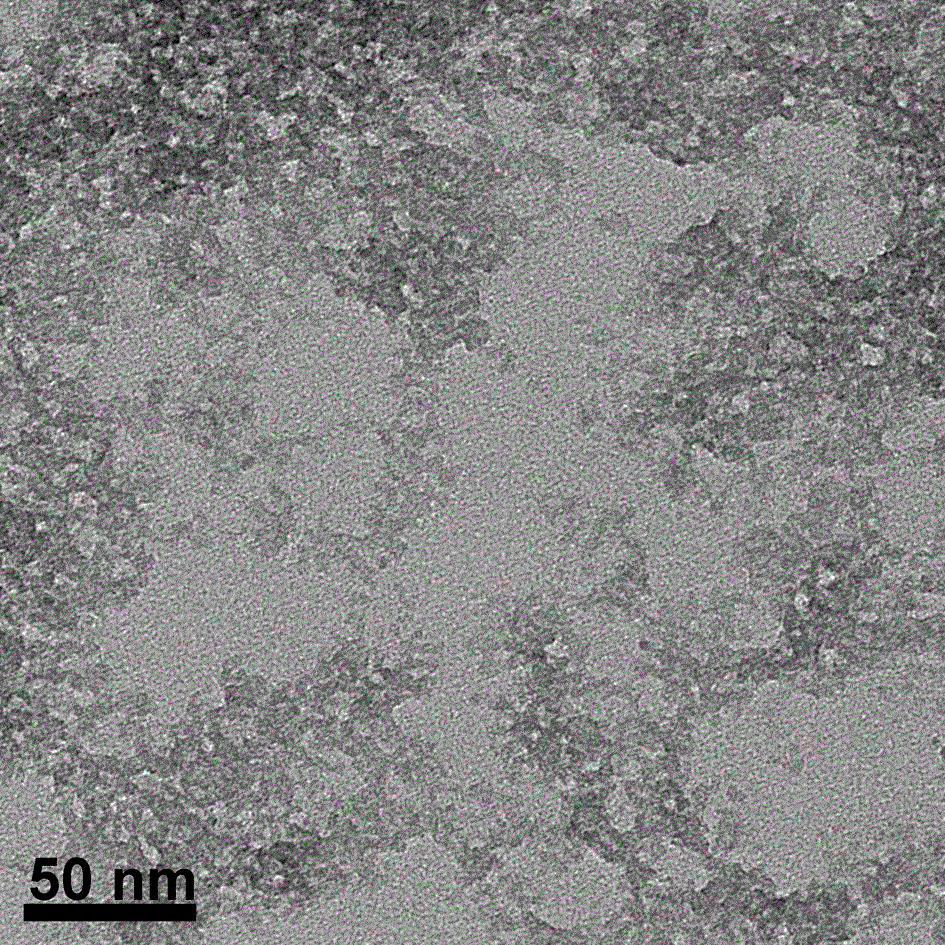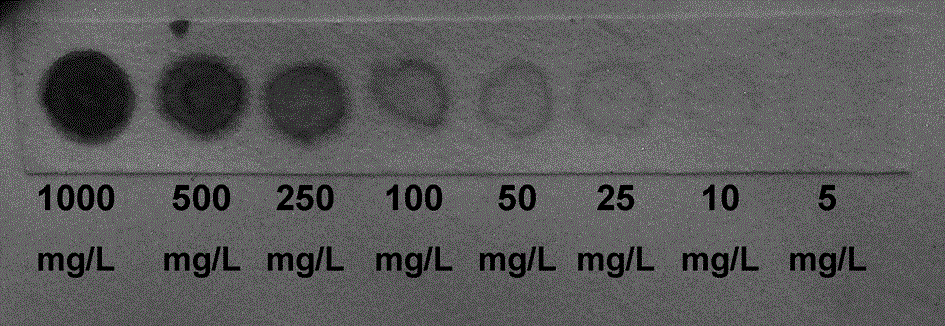Cobalt ion test paper based on nanoscale zinc sulfide, preparation method thereof and test method
A technology of nano-zinc sulfide and detection test paper, which is applied in the field of cobalt ion detection, can solve problems such as high price and inability to achieve quantitative analysis, and achieve the effects of low cost, rapid qualitative and semi-quantitative detection, and quantitative detection.
- Summary
- Abstract
- Description
- Claims
- Application Information
AI Technical Summary
Problems solved by technology
Method used
Image
Examples
preparation example Construction
[0021] A preparation method based on nano-zinc sulfide cobalt ion detection test paper, comprising the following steps:
[0022] 1) Preparation of zinc sulfide nanoparticle dispersion: Dissolve zinc salt and sodium sulfide with a molar ratio of 0.25~4:1 in deionized water respectively to obtain zinc salt solution and sodium sulfide solution; heat the zinc salt solution to 60~100 ℃, then add thioglycolic acid dropwise, and continue stirring for 20-40 min, the volume ratio of thioglycolic acid to zinc salt solution is 0.01-0.1:1; then add sodium sulfide solution dropwise, and continue stirring for 60-150 min Post-cooling to obtain a zinc sulfide nanoparticle dispersion;
[0023] 2) Preparation of test paper: Soak the adsorption layer in the zinc sulfide nanoparticle dispersion obtained in step (1) for 1-10 min, fully infiltrate, then remove the soaked adsorption layer, and dry to obtain cobalt ion detection test paper.
[0024] The zinc salt described in step (1) is one or more...
Embodiment 1
[0039] A preparation method based on nano-zinc sulfide cobalt ion detection test paper, comprising the following steps:
[0040] 1) Preparation of zinc sulfide nanoparticle dispersion: Dissolve zinc acetate and sodium sulfide with a molar ratio of 1:1 in deionized water to obtain zinc acetate solution and sodium sulfide solution; heat the zinc acetate solution to 80°C, then drop Add thioglycolic acid and continue to stir for 30 min. The volume ratio of thioglycolic acid to zinc acetate solution is 0.05:1; then add sodium sulfide solution dropwise, continue stirring for 120 min and then cool to obtain a zinc sulfide nanoparticle dispersion; The zinc sulfide nanoparticle dispersion is detected, and the X-ray diffraction pattern is obtained as figure 1 shown and transmission electron micrographs as figure 2 shown;
[0041] 2) Preparation of test paper: soak the adsorption layer in the zinc sulfide nanoparticle dispersion liquid obtained in step (1) for 1 min, fully infiltrate,...
Embodiment 2
[0043] A preparation method based on nano-zinc sulfide cobalt ion detection test paper, comprising the following steps:
[0044] 1) Preparation of zinc sulfide nanoparticle dispersion: Dissolve zinc salt and sodium sulfide with a molar ratio of 4:1 in deionized water to obtain zinc salt solution and sodium sulfide solution; heat the zinc salt solution to 100°C, then drop Add thioglycolic acid and continue to stir for 40 min. The volume ratio of the thioglycolic acid to the zinc salt solution is 0.1:1; then add the sodium sulfide solution dropwise, continue stirring for 150 min and then cool to obtain a zinc sulfide nanoparticle dispersion; Described zinc salt is zinc nitrate;
[0045] 2) Preparation of test paper: Soak the adsorption layer in the zinc sulfide nanoparticle dispersion liquid obtained in step (1) for 10 minutes, fully infiltrate, then take out the soaked adsorption layer, and dry to obtain cobalt ion detection test paper; the adsorption The first layer is lens cle...
PUM
| Property | Measurement | Unit |
|---|---|---|
| density | aaaaa | aaaaa |
Abstract
Description
Claims
Application Information
 Login to View More
Login to View More - R&D
- Intellectual Property
- Life Sciences
- Materials
- Tech Scout
- Unparalleled Data Quality
- Higher Quality Content
- 60% Fewer Hallucinations
Browse by: Latest US Patents, China's latest patents, Technical Efficacy Thesaurus, Application Domain, Technology Topic, Popular Technical Reports.
© 2025 PatSnap. All rights reserved.Legal|Privacy policy|Modern Slavery Act Transparency Statement|Sitemap|About US| Contact US: help@patsnap.com



